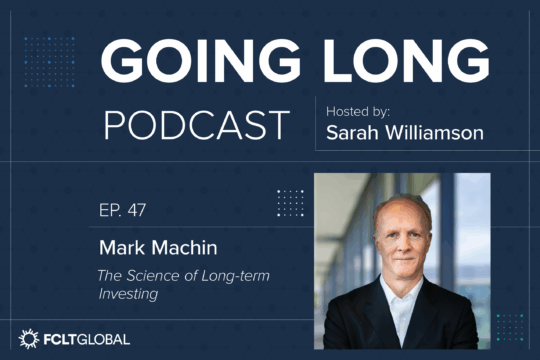Roadmaps have a proven record at leading companies, and evidence suggests that the majority of investors (especially long-term investors) prefer this approach. By focusing on key elements of performance such as competitive advantages, long-term objectives, and a strategic plan matched with clear capital allocation priorities, companies can build buy-in among long-term investors who support a focus on long-term value creation.
Survey after survey indicates that investors prefer forward-looking, long-term guidance around a company’s strategy and expected performance. This paper, which represents the collective effort and experience of FCLTGlobal’s Members, academic experts, and other investment leaders, suggests a way to shift the investor relations conversation from quarterly “hits” and “misses” toward how companies create long-term value.
Today’s companies face increasing pressure to respond to information requests from all sides. It is no surprise that managers and investors are frustrated.
Transitioning away from the quarterly treadmill toward conversations centered on the long term can simplify investor communications, while simultaneously strengthening companies’ longer-term shareholder bases, alleviating short-term pressure and improving the accuracy of valuations. Long-term roadmaps are the key to this transition.
Long-term roadmaps present a unified view of how a company will create long-term value with the most relevant metrics to track long-term performance. This format provides investors with a distillation of a company’s core drivers of growth and competitive advantages, a company’s long-term objectives and the strategic plan for achieving them over three to five years, and a company’s priorities for capital allocation and investment. A long-term roadmap also offers investors a current snapshot and forward-looking trajectory of the company’s performance on the operational and financial metrics most closely tied to growth. It focuses on the information that investment decision makers actually need.
Two additional factors distinguish long-term roadmaps from traditional investor communications. First, a roadmap’s forward-looking estimates all focus on objectives one year out, at a minimum. The point is to help investors keep the company accountable to its plan for long-term value creation, not to provide fodder for short-term traders and the media. Second, these roadmaps are intended to foster dialogue between companies and long-term shareholders, rather than serving as press releases for transient traders. Long-term roadmaps provide the right kind of shareholders the information they need to engage with and support corporate managers, thus facilitating the types of long-term investments that enable ongoing growth.


